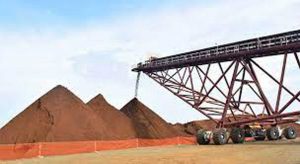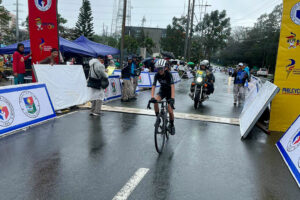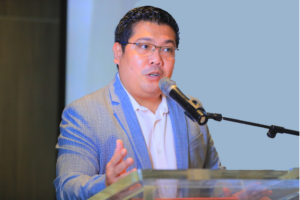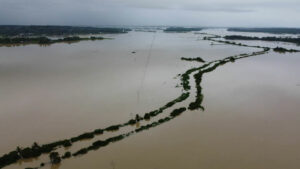Powder kegs to pandemic-driven social unrest

It has been said that Nobel laureate Amartya Sen’s lifetime work involved the economics of life and death. It is all about hunger and starvation and food supply. What Sen found repulsive was that deathly famines had overtaken many poor countries even as food supply continued to expand. Food supply is about physical commodity, but poverty and hunger involve the issue of relationship of people with commodities, like ownership and access.
In the Philippines, this concept of “entitlement relations” is presumed settled by the fundamental law of the land. The preamble affirms our aspiration to build a just and humane society, promote the common good and secure the blessings of independence — in so many words and in various provisions.
But life is more complex, and such entitlement may be blocked by, for instance, high inflation, lower wages, natural calamity, and, in the last two years, the health pandemic and its economic consequences. What is worse from society’s standpoint is when the ultimate outcome is one of conflict.
This interesting dimension was highlighted by one of the IMF’s blogs earlier this year. Philip Barrett, Sophia Chen, and Nan Li wrote a very interesting piece, “COVID’s Long Shadow: Social Repercussions of Pandemics” (Feb. 3, 2021) which connected the great cholera pandemic in Paris of 1832 with class tension, culminating in the Paris Uprising of 1832.
The IMF staff narrated the pandemic’s record of killing 20,000 out of the city’s population at the time of 650,000. Where else but in squalid poor quarters of the city did the pandemic claim lives, the same poor people who flocked to the city during the Industrial Revolution. As the pandemic propagated itself throughout the city, class tensions escalated as the moneyed class blamed the poor for the spread of the disease. We are being poisoned, complained the poor.
Paris was embroiled in a class war.
The conflict heightened with the outbreak of anti-government mass demonstrations punctuated with barricades after barricades. The French government repressed the exploding public revolt. Yes, the ensuing conflict was immortalized by Victor Hugo in Les Miserables and the point is made that disease outbreaks cast “long shadows of social repercussions: shaping politics, subverting the social order, and some ultimately causing social unrest.”
Pandemics can unmask underlying, potentially explosive tensions in society. They can appear in the historical divide between the rich and the poor. In recent times, tensions can derive from what the Fund staff described as “inadequate social safety nets, lack of trust in institutions, or a perception of government indifference, incompetence, or corruption.” Surges of disease can be accompanied with some ethnic, religious, or class backlashes. They generalized this observation from the Justinianic Plague in Europe and the Near East beginning 541AD; the Black Death in Afro-Eurasia between 1346 to 1353; and the 1918 Spanish Flu that devastated the world with estimated 500 million infections and about 50-100 million deaths.
The Fund staff admitted that quantitative evidence on the link between epidemics and social unrest was at best tenuous and episodic. What the Fund staff research supplied was global evidence of the link between epidemics and social unrest.
Faced with the usual research issues on data frequency, consistency of data coverage and precise dating of events, the staff developed a Reported Social Unrest Index which provides “consistent, monthly measure of social unrest data for 130 countries from 1985 to the present.” With upticks in the index closely corresponding to the narratives of unrest, the Fund concludes that the index is a good measure of real events rather than observed shifts in either media attention or sentiment.
The Fund found that countries with more frequent and severe disease outbreak and pandemics were also subject to more unrest, on average.
One should not expect immediate occurrence of social unrest during or right after the pandemic. There could be some countervailing forces at work like logistical issues, public sentiment favoring cohesion and unity in challenging times, or, in some jurisdictions, consolidation of power and suppression of dissent may be happening. Any of these could explain why the COVID-19 experience was not marked with major global unrest with the possible exception of the US and Lebanon.
It may be difficult to simply dismiss that this viral pandemic in the Philippines would not lead to any mass unrest reminiscent of the Paris Uprising of 1832. A key message in the study is that “over time, the risk of riots and anti-government demonstrations rises.” What is grim is that the risk may involve the government itself, “an event that threatens to bring (it) down … and typically occurs in the two years following a severe epidemic.”
Nobody wants riots or disorder on the streets. We have enough woes from our legacy problem of poverty and inequality, we continue to struggle against the economic dislocation, courtesy of COVID-19. Economic scars abound and they will be the agenda of both the outgoing and incoming leaderships.
The risk sets in when the people discern that nothing is being done about them. One good example is when we continue to incur higher budget deficit and higher debt to finance it while public money is dissipated in bad governance and corruption, rather than used to mitigate the pandemic and provide social support. Pharmally and Malampaya should be pursued until all the guilty parties are charged in court. Otherwise, they are powder kegs.
It is clear that the window is two years, and the threat of unrest magnifies when these pre-existing problems continue to haunt and abet lack of trust in institutions, poor governance, corruption, and, yes, poverty and inequality.
What is the likelihood the world in general and the Philippines in particular could manage this socially explosive social situation?
In last year’s World Economic Outlook, the IMF highlighted two facts about the pandemic and their link to these two social issues. First is the ability to work from home. Since low-income workers have limited opportunity to render remote work, job cutbacks applied mostly on them. Income distribution worked against them. One can recall that while some growth signs have emerged, unemployment remains elevated.
Second is the computed bigger impact of the current pandemic compared to those of previous pandemics. All told, the Fund argued that the gains of both emerging and developing markets since the global financial crisis could be reversed by the economic effects of the pandemic. Welfare across the globe receded in terms of consumption and life expectancy. The Philippines continues to ascend from the depths of recession of 2020.
While the Fund proposed investment in retooling, access to technology and cyberspace, financial inclusion, unemployment insurance, conditional cash transfer, and other forms of social support, their implementation is quite uneven, sometimes, too little and too late.
It is not good to simply allow people to realize what Martin Luther King, Jr said one evening: “The only weapon that we have in our hands… is the weapon of protest.”




